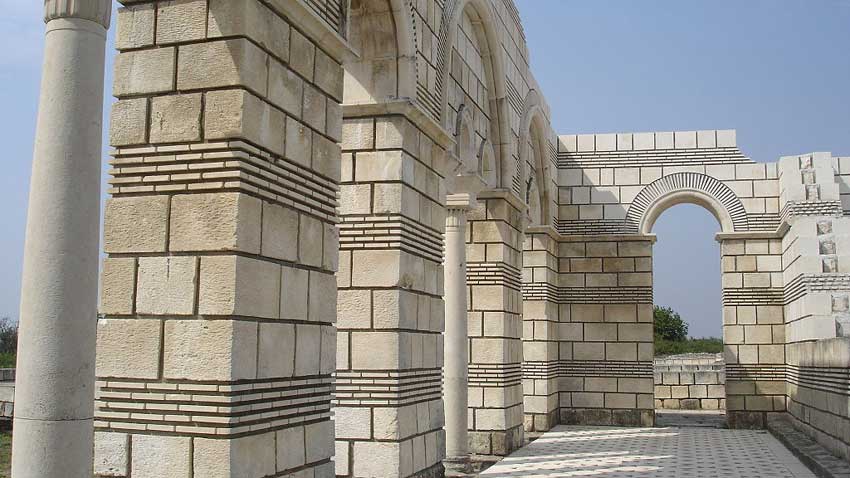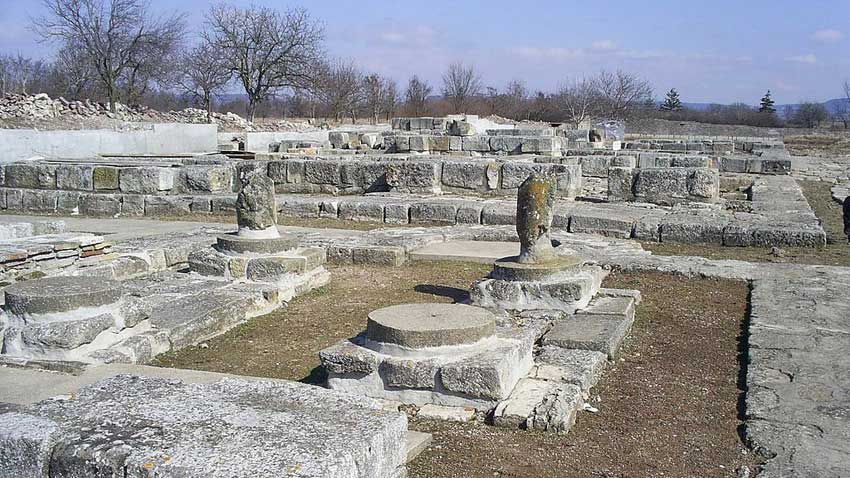First city, centre – that is the meaning of the name Pliska, which the founders of the First Bulgarian Kingdom gave to their capital in the 7th century. They selected a location where major trade routes intersected, whereas the lay of the land was perfect for animal husnabdry. Nowadays, thousands come here, to the place where Pliska once rose, out of a sense of curiosity, but also reverence for their forefathers. The Pliska national history and archaeology reserve lies just 2 kilometers from the modern town of Pliska and 29 from Shoumen; in 1970 it was declared a monument of culture. For decades the town’s ruins have been studied by prominent archaeologists from Bulgaria and abroad.

According to experts, the construction of Pliska started at the end of the 7th and the beginning of the 8th century. The buildings were made of wood and were used as homes or for official purposes. To begin with, the Pliska palace complex was surrounded by a fortress wall; then settlements for ordinary folk appeared in the surrounding fields. Later the town was burnt down by the Byzantines and from the ashes of the palace rose a big building made of stone that came to be known as the palace of Khan Kroum (born 8th century, died 814).
The conversion of the population to Christianity that started in 864 under Tsar Boris I altered the capital. The pagan temples were turned into Christian churches and monasteries and new ones were put up, the most notable among them being the Grand Basilica. Its remains are impressive to this very day – evidence of the spiritual power and mission of the sovereign.

Some 1.5 kilometers from these ruins rises the East Gate – the main entrance to the fortified city where the Khan and the nobility lived.
“The Grand Basilica was probably built in the outer city so more people would have access to it. This church was more than 100 by 30 meters, making it the biggest church in the Balkan peninsula in its day,” says Hristina Stoyanova, chief curator of the Pliska national history and archaeology reserve:
“The memory of Pliska lives on. It was the city where the foundations of the Bulgarian state were laid. It survived through to the mid-9th century and then fell into ruination and oblivion. Unfortunately, we now find it in ruins though everything that has come down to us from our ancestors is very important and priceless to us. We have endeavoured to make computer reconstructions of those monuments whose foundations still stand, so as to show tourists what the palace complex once looked like. In connection with the ongoing conservation and restoration work, this year a decision was made to clean out the Grand Basilica’s so-called sacred well so as to open it to the public. The well has been on this same spot for over 12 centuries. One hundred years ago archaeologists attempted to reach it but for safety reasons had to stop digging. This year there is much interest in this find and we have registered a 100 percent increase in the number of tourists coming here compared to previous years. Interest is running high also because of our museum exposition. Our guests can see here replicas of medieval clothes and two yurt-type homes, inside which the furnishing and household objects have been recreated with meticulous precision. We have a visiting exposition of exhibits from the National Museum of History, connected with the time of Great Bulgaria. The exhibits feature a copy of the eagle figure with monogram, connected with the man who founded the Bulgarian state, Khan Asparouh. The original is at the Hermitage in St. Petersburg.”

English version: Milena Daynova
Photos: wikipedia.orgSupposedly, the city of Kabyle that thrived in what is now Southeastern Bulgaria, was named after the Thracian Mother of Gods Cybele portrayed on the rocks of the Zaychi Vrah shrine. It was at the foot of this ancient astronomical..
Samokov lies just 55 kilometers from Sofia and is best known for its proximity to the ski resort of Borovets. The people who have inhabited these parts through the ages have left abundant evidence – for example stone, wood and paper..
A peak situated in the Rhodope Mountains was named after a fairytale character. People call it Znezhanka (Snow white), because it is covered with snow most time of the year. Winter there lasts from November until May. The peak rises some 15..

+359 2 9336 661
